We updated this Long Idea on January 18, 2024. A copy of the update report is here.
As the world takes inventory after the supply chain disruptions of the pandemic, the need for domestic semiconductor manufacturing is evident. Enthusiastic public policy support and growing demand from artificial intelligence (AI) make Vishay Intertechnology Inc. (VSH: $25/share), a manufacturer of semiconductors and electronics, this week’s Long Idea.
Vishay Intertechnology presents quality risk/reward given the company’s:
- position to benefit from the Infrastructure and CHIPS Acts
- capacity expansion
- strong free cash flow generation
- attractive valuation.
Semiconductors: A Primer
From smartphones to LEDs, artificial intelligence (AI) models to gaming computers – the digital economy runs on semiconductors. A car, for example, is no longer a mere transportation tool, but a sophisticated computer on wheels, with approximately 1,200 embedded chips. The essence of a semiconductor lies in its ability to behave somewhere between a conductor of electricity, such as iron or copper, and an insulator, like glass. This inherent trait enables semiconductors to regulate electrical current flow, which makes them indispensable in the creation of computer chips, particularly their core component – the transistor. Semiconductors can change the flow of currents, emit switching signals (transistors and diodes), amplify electrical signals (as seen in earphones), and manage the interchange between electrical and light energy, a characteristic manifested in LEDs.
Most importantly, semiconductors form the core of central processing units (CPUs) found in our everyday computers, and graphics processing units (GPUs), known for their sheer processing power in growing markets like AI.
The semiconductor industry’s structure comprises four distinct steps in its value chain, each overseen by specialized firms.
- Theoretical semiconductor research is often tackled by universities and governments.
- Fabrication equipment production is led by companies like Netherlands-based ASML (ASML). These are the firms that make the equipment needed to make a semiconductor.
- Chip design is done by high-profile names AMD (AMD), NVIDIA (NVDA), and the recently public Arm (ARM).
- Chip fabrication, which is done in foundries, comes with staggering operational costs. Taiwan’s giant TSMC (TSM) has a near-monopoly based on its ability to master chip manufacturing at a minuscule 3-nanometer scale.
Few firms attempt to compete in more than one of the four steps. Steps three and four are where the big money is made because of the high-risk, high-reward nature of those businesses. Not only is creating a superior new chip design incredibly competitive and difficult, but it is also very expensive. But, to the winners go the spoils. Look at the fabulous valuations and profits earned by AMD, NVDA and ARM after their products win wide market adoption.
Beyond semiconductors, our Long Idea pick builds an array of components including resistors, inductors, and capacitors, the so-called ‘passive electronics’, integral to chips and numerous products. With McKinsey projecting the semiconductor market to burgeon into a trillion-dollar industry by 2030, Vishay and the industry as a whole are set to enjoy a strong tailwind for many years. See Figure 1.
Figure 1: Global Semiconductor Market Value ($ billions): 2021 – 2030
Source: McKinsey
A Well-Diversified Business
Vishay showcases diversification across end clients, product lines, and geographic regions. The company serves a diverse range of industries, from automotive and computing to military and medical. Balancing its sales channels, Vishay maintains relationships with both distributors (~50% of revenue) and leading original equipment manufacturers (~40%of revenue), which ensures no over-reliance on any single channel.
Its client list includes well-known brands such as General Electric (GE), Raytheon, Samsung, Apple (AAPL), and Jabil (JBL) as well as Long Idea pick Cisco (CSCO). Geographically, Vishay’s operations are evenly spread across Europe, Asia, and North America.
Growth And Margin, Hand In Hand
A closer look at Vishay’s product segments reveals the rising prominence of MOSFETs. An acronym for ‘metal oxide semiconductor field effect transistor’, MOSFETs are the most common type of transistor, and the growth in this segment reflects the broader surge in semiconductor demand.
MOSFET segment sales grew 31% YoY in 2Q23 and have gross margins in the mid-30% range, which is the highest among the company’s segments. This growth hints at the prospect of expanding net operating profit after tax (NOPAT) margins for Vishay in the future. As a testament to its product diversification, the company’s semiconductors are found in up to 80% of components on many circuit boards. Moreover, a significant ~70% of Vishay’s business focuses on ‘non-commodity’ (products with only a few competitors) and custom categories, which emphasizes its unique market position. See Figure 2.
Figure 2: Vishay’s Business Segments: 2022 – 2023
Source: New Constructs, LLC and company filings
Capacity Expansion: The Name Of The Game
Capitalizing on the momentum in the semiconductor industry, Vishay is expanding capacity. Guided by the “megatrends of connectivity, mobility, and sustainability”, management’s CAPEX strategy earmarks a significant $1.2 billion for capacity expansion by 2025, which includes the recent launch of a state-of-the-art inductor facility in Durango, Mexico.
This planned investment equals the free cash flow (FCF) Vishay generated between 2017 and 2022, which is available to grow the business because of low leverage in Vishay’s balance sheet. In other words, the company is able to fuel future growth while still returning value to its shareholders.
Capitalizing On The EV Revolution
The growth in electric vehicles (EVs) is driven by both electrification and sustainability trends. Significant government incentives from the Infrastructure Act (IIJA) and the CHIPS Act further bolster their growth prospects, which makes EVs a primary growth driver for Vishay. In fact, the automotive and industrial sectors make up more than 70% of Vishay’s business in 2Q23. We see the company as a strategic ‘picks and shovels’ play in the crowded EV manufacturers’ market. While some EV companies are on our Zombie Stock list, the EV industry’s demand for transistors, diodes, and resistors remains hard to ignore for many years to come.
McKinsey projects that global EV sales will jump from 6.5 million units in 2021 to 40 million by 2030. To capitalize on the growing demand for EVs, Vishay plans a 10% increase in annualized automotive capacity in 2024, with a potential 30% rise by 2026. Notably, Vishay’s growth is not just based on new entrants to the EV market. Traditional automotive brands also show growing demand for the company’s products, which supports our thesis that legacy companies are more likely to co-opt new technologies than to be disrupted by them. See Figure 3.
Figure 3: Global EV Market Sales Projection: 2022 – 2030
Source: Precedence Research
When The CHIPS Are Down
On August 9, 2022, the CHIPS Act was enacted and is driving the revival of domestic semiconductor production. The legislation commits a substantial $280 billion over a decade and addresses multiple facets of the sector. Notably, from this funding, scientific R&D and the rollout of commercial applications, especially in areas like AI, quantum computing, clean energy, and nanotechnology, will receive $200 billion.
In a move to shore up domestic production, $52.7 billion goes towards semiconductor R&D, workforce training, and fabrication. This allocation comes alongside $24 billion in tax incentives for semiconductor fabrication and an additional $3 billion focused on cutting-edge tech and wireless network supplies.
The decline in the U.S.’s global semiconductor manufacturing share from 37% in the 90s to a mere 12% in 2022 triggered this significant investment. This downturn, coupled with recent vulnerabilities in foreign semiconductor supply chains and rising geo-political tensions, emphasizes the pressing need to expand local fabrication capabilities. Moreover, to lure in the private sector, the CHIPS Act offers a 25% tax credit for five years on advanced fabrication ventures in the semiconductor equipment space, with an estimated expenditure of $24 billion. All of these factors support domestic semiconductor companies like Vishay, which, as a picks and shovel play benefits from growth in all steps of the value chain.
Improving Fundamentals
Vishay has grown revenue and NOPAT by 6% and 11% compounded annually, respectively, since 2017. The company’s NOPAT margin improved from 10% in 2017 to 13% in the trailing twelve months (TTM), while invested capital turns increased from 0.7 to 0.8 over the same time. Rising NOPAT margins and invested capital turns drive the company’s return on invested capital (ROIC) from 7% in 2017 to 10% in the TTM. See Figure 4.
Figure 4: VSH’s Revenue and NOPAT: 2012 – TTM
Sources: New Constructs, LLC and company filings
Reliable Free Cash Flow (FCF) Generation Drives 4.0% Yield
Vishay’s ability to produce free cash flow (FCF) has been remarkable. The company has generated positive free cash flow in 9 out of the last 10 years and a cumulative $1.3 billion in FCF since 2017, which represents 37% of its enterprise value.
Vishay’s FCF easily exceeds its regular dividend payments. From 2017 to 2Q23, Vishay generated $1.4 billion in FCF while paying $330 million in dividends. See Figure 5. Its current quarterly dividend, when annualized, provides investors with a 1.6% dividend yield. Moreover, the company repurchased $83 million of its stock in 2022. Its current stockholder return policy, which calls for the company to return at least 70% of free cash flow on an annual basis, will remain in effect until the Board votes to amend or rescind the policy. If Vishay continues repurchases at the same pace, the combined (dividend and repurchase) yield to shareholders would be 4.0%.
Figure 5: Vishay’s Free Cash Flow and Dividends Paid: 2017 – 2022
Sources: New Constructs, LLC and company filings.
Shares Have At Least 28% Upside
At its current price of $25/share, VSH has a price-to-economic book value (PEBV) ratio of 0.7, which means the market expects profits to permanently fall 30% from current levels. Below, we use our reverse discounted cash flow (DCF) model to further quantify how low the expectations baked into Vishay’s stock price are. We also present the upside potential in the stock if the company grows NOPAT below historical growth rates.
DCF Scenario 1: to Justify the Current Stock Price
We assume Vishay’s:
- NOPAT margin falls to 8% (from 13% in the TTM) from 2023 to 2032 and
- 2% compounded annually (less than half the 6% compounded annually since 2017) through 2032
In this scenario, Vishay’s NOPAT would fall 3% compounded annually through 2032 and the stock would be worth $25/share today – equal to the current price. For reference, Vishay has grown NOPAT by 11% compounded annually since 2017.
DCF Scenario 2: Shares Have 28%+ Upside With No Profit Growth
If we instead assume Vishay’s:
- NOPAT margin falls to 9% (below three-year average of 11%) from 2023 to 2032 and
- revenue grows 4% compounded annually from 2025 to 2032 (versus 8% compounded annually since 2019), then
VSH would be worth at least $32/share today – a 28% upside to the current price. In this scenario, Vishay’s NOPAT grows <1% compounded annually over the next decade.
Should Vishay grow profits more in line with historical levels, the stock has even more upside. Figure 6 compares Vishay’s historical NOPAT to the NOPAT implied in each of the above DCF scenarios.
Figure 6: Vishay’s Historical and Implied NOPAT: DCF Valuation Scenarios
Sources: New Constructs, LLC and company filings.
Sustainable Competitive Advantages Will Drive Shareholder Value Creation
Here’s a summary of why we think the moat around Vishay’s business will enable it to continue to generate higher NOPAT than the current market valuation implies.
- diversification across clients, product lines, and geographic regions,
- focus on non-commodity and custom products, and
- entrenched relationships with the automotive sector and OEMs.
What Noise Traders Miss with Vishay
These days, fewer investors focus on finding quality capital allocators with shareholder-aligned corporate governance. Due to the proliferation of noise traders, the focus is on short-term technical trading trends while more reliable fundamental research is overlooked. Here’s a quick summary of what noise traders are missing:
- almost all computerized technology requires semiconductors and will require them for a long time.
- sustained chip demand, especially in the automotive segment, will drive higher demand for Vishay.
- Vishay’s augmented capacity to meet future demand.
Earnings Beats Could Send Shares Higher
Vishay has beaten earnings estimates in 6 of the past 10 quarters and doing so again could send shares higher. Beyond earnings beats, sustained demand for semiconductors (especially domestically) and EVs should support the stock as well.
Executive Compensation Could Be Better
Investors should favor companies with executive compensation plans that directly align executives’ interests with shareholders’ interests. Quality corporate governance holds executives accountable to shareholders by incentivizing them to allocate capital prudently.
In addition to base salary, Vishay’s executives receive annual incentives that are awarded based on non-GAAP measures such as Adjusted Net Earnings.
Instead, we would prefer to see Vishay tie executive compensation to ROIC, or a similar measure, which ensures that executives’ interests are more aligned with shareholders’ interests as there is a strong correlation between improving ROIC and increasing shareholder value.
In spite of compensation practices that are not directly aligned with shareholders’ interests, Vishay has grown economic earnings, the true cash flows of the business, from -$34 million in 2019 to $77 million in the TTM.
Insider Trading and Short Interest Trends
Over the past 12 months, insiders have purchased 310,231 shares and have sold 190,936 shares for a net effect of 119,295 shares bought. These sales represent less than 1% of shares outstanding.
There are currently 7.4 million shares sold short, which equates to 6% of shares outstanding and six days to cover. The lack of significant short interest reveals not many are willing to take a stake against this highly profitable company.
Attractive Funds That Hold VSH
The following funds receive an Attractive-or-better rating and allocate significantly to VSH:
- Royce Small-Cap Special Equity Fund (RSEIX, RYSEX, RESFX, RSQCX) – 5.8% allocation and Very Attractive rating.
- ProShares S7P Technology Dividend Aristocrats ETF (TDV) – 3.3% allocation and Attractive rating.
- Olstein Strategic Opportunities Fund (OFSFX) – 2.5% allocation and Attractive rating.
- First Trust Nasdaq Semiconductor ETF (FTXL) – 2.4% allocation and Attractive rating.
- Royce Small-Cap Value Fund (RYVFX, RVVHX) – 2.0% allocation and Very Attractive rating.
This article was originally published on September 21, 2023.
Disclosure: David Trainer, Kyle Guske II, Italo Mendonca, and Hakan Salt receive no compensation to write about any specific stock, style, or theme.
Questions on this report or others? Join our Society of Intelligent Investors and connect with us directly.

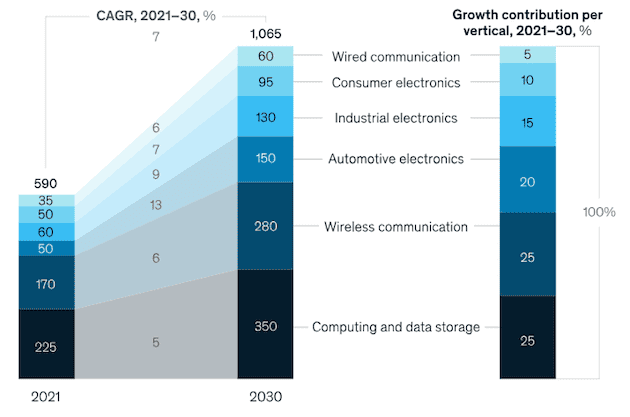
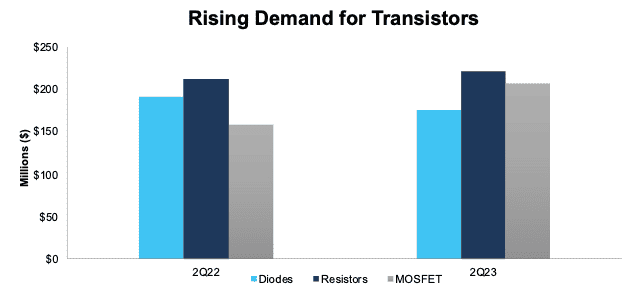
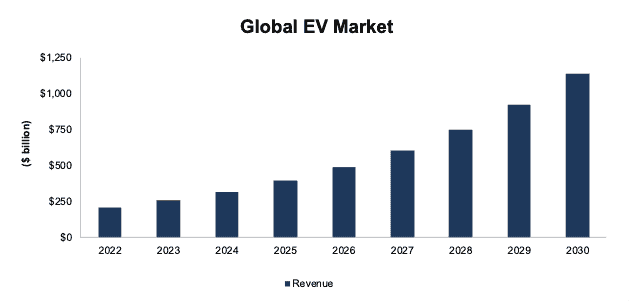
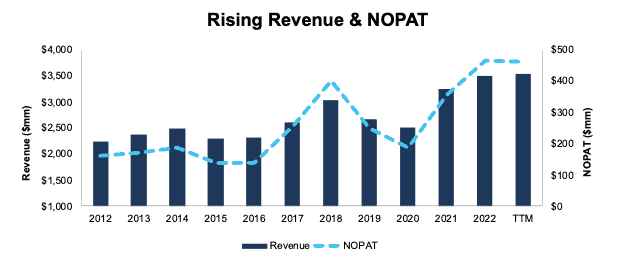
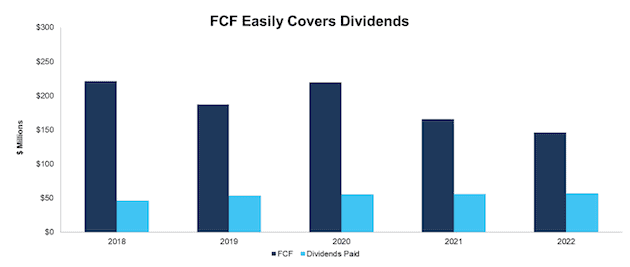
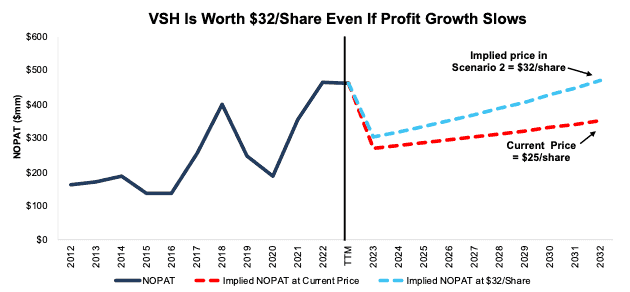
2 replies to "Chips Ahoy"
I saw on the After Hours podcast that you will be launching a product for retail investors, like me. I would be grateful if you could please let me have the details when they are ready.
Hi Rene,
We’d be happy to let you know the details as they are available. I’ll add you to the mailing list for that – and if you’d like to get to know New Constructs a little bit better I also suggest joining our online community, The Society of Intelligent Investors, or catching up with us on our live podcast Intelligent Capital Allocation.
Best,
Tam